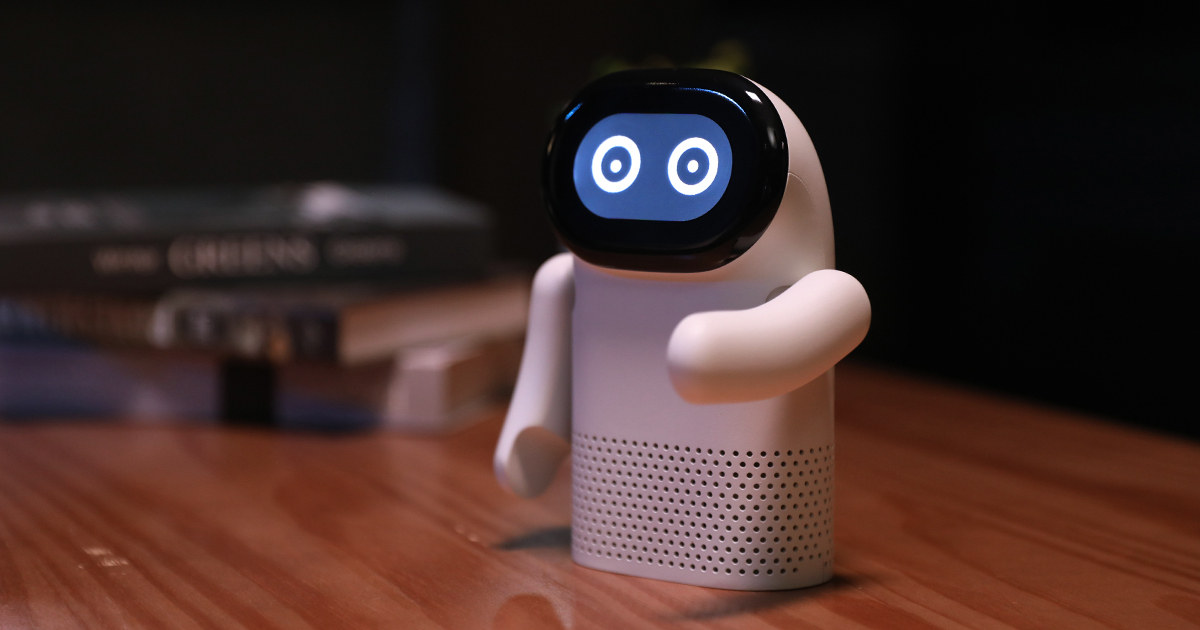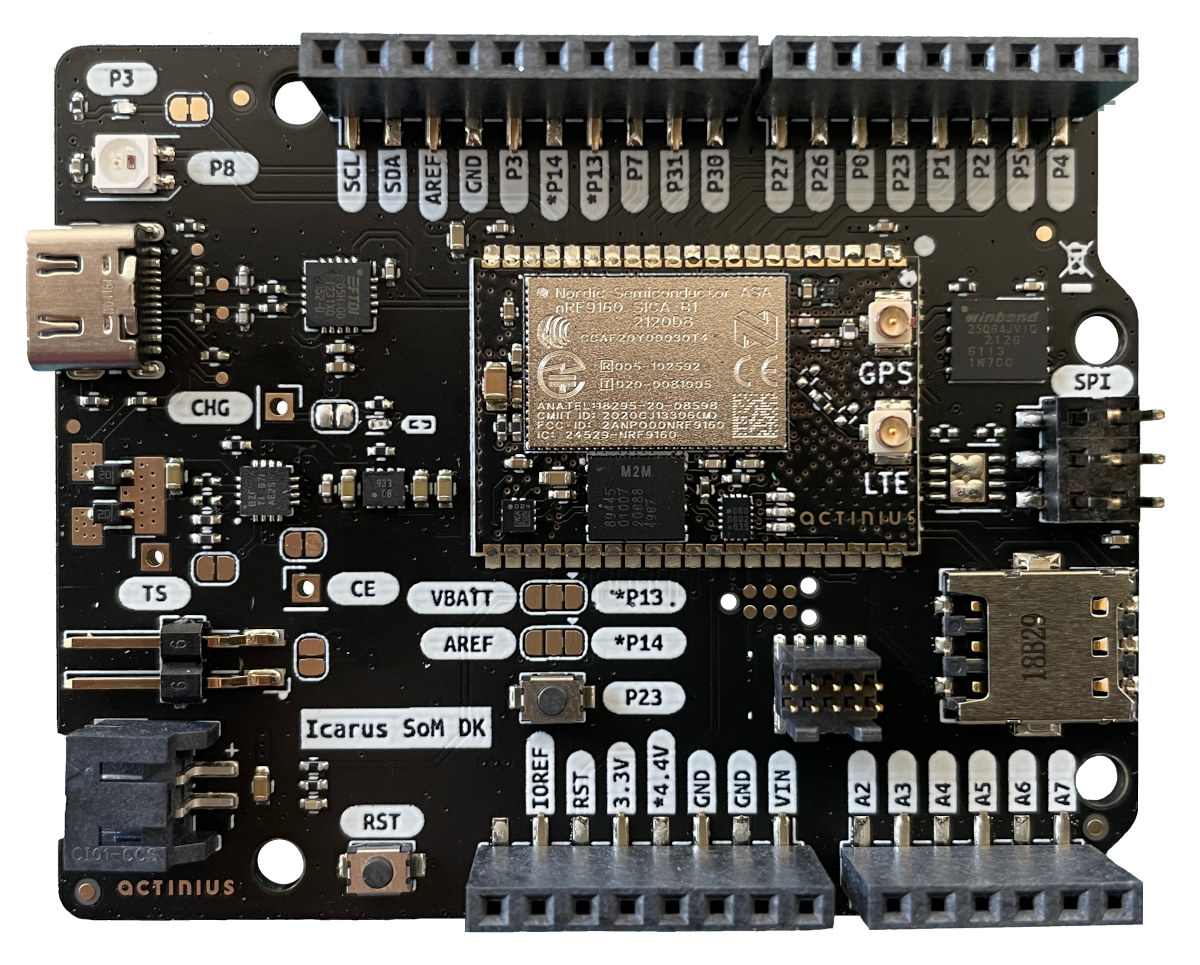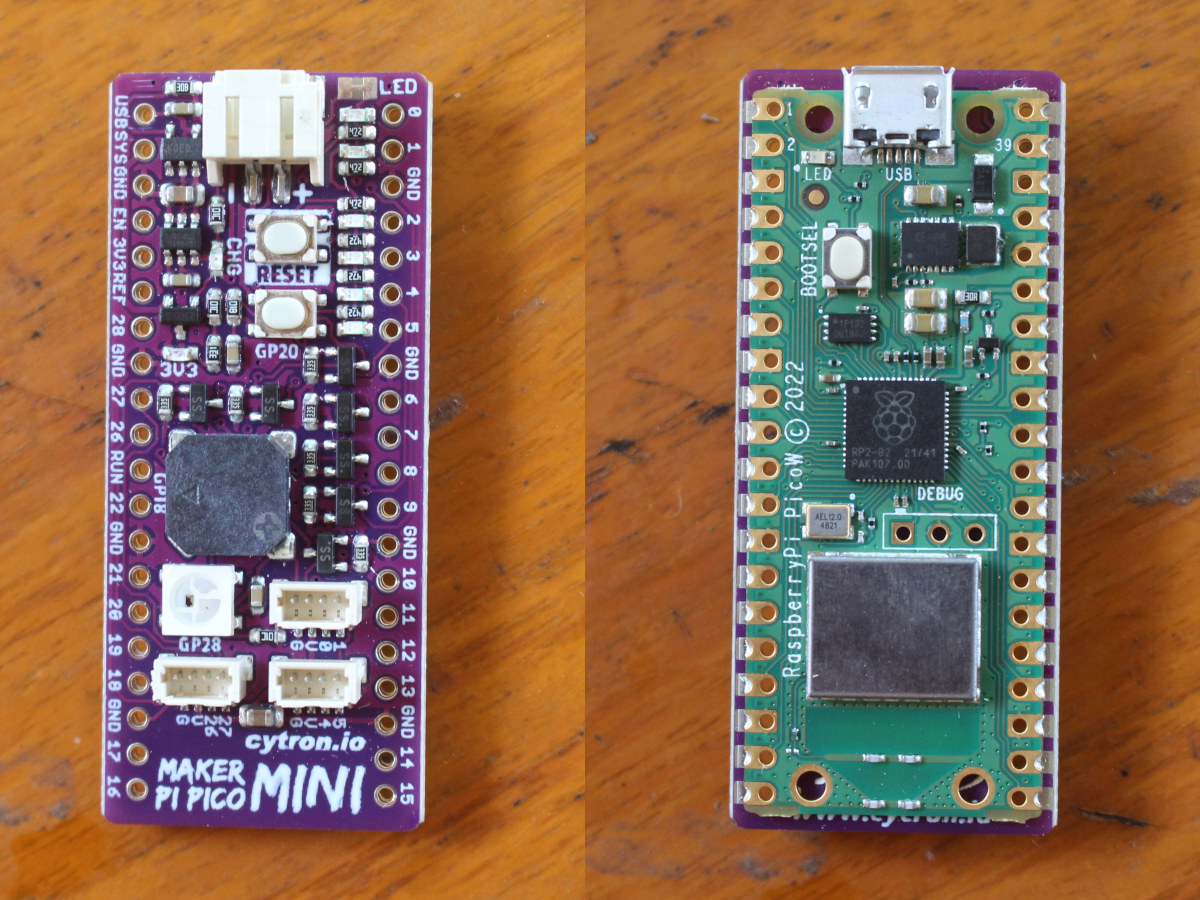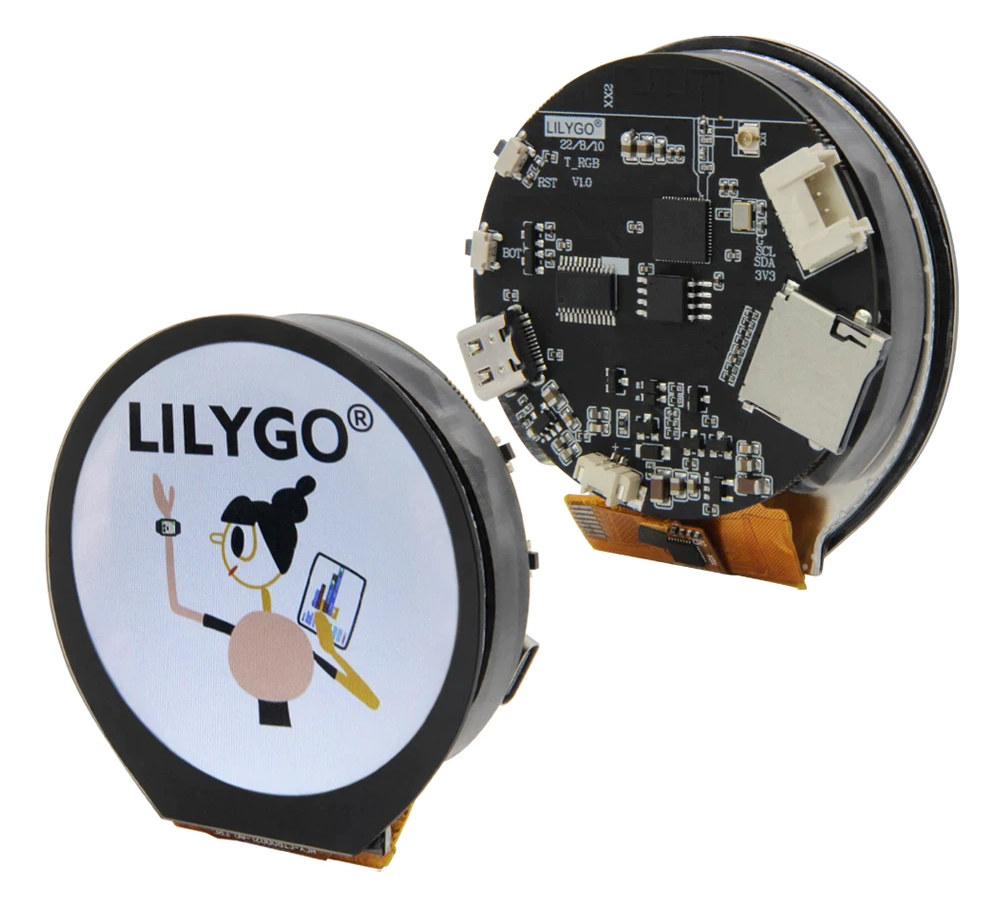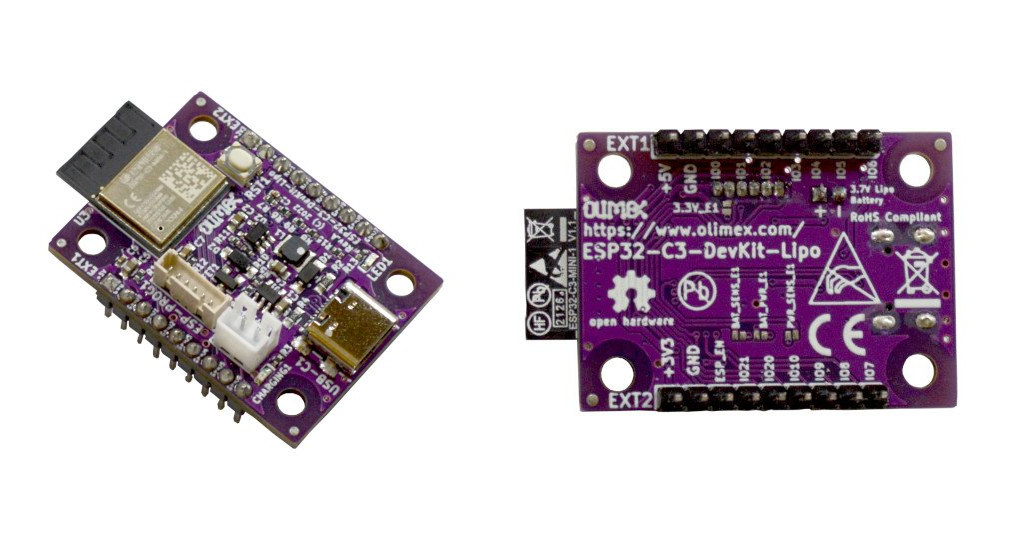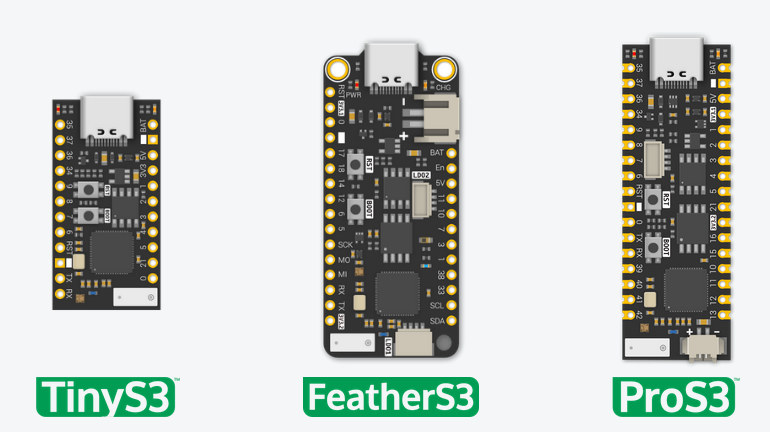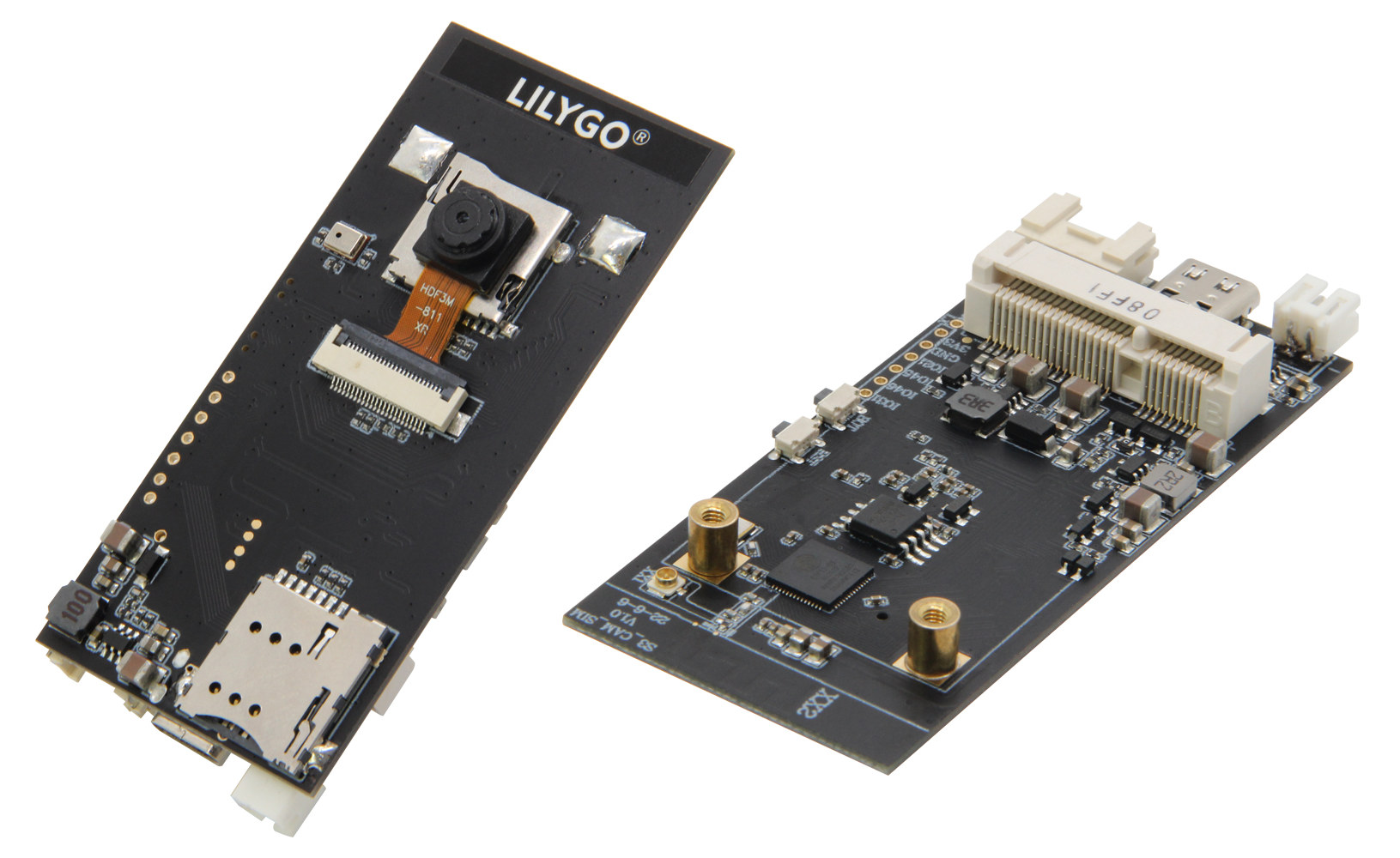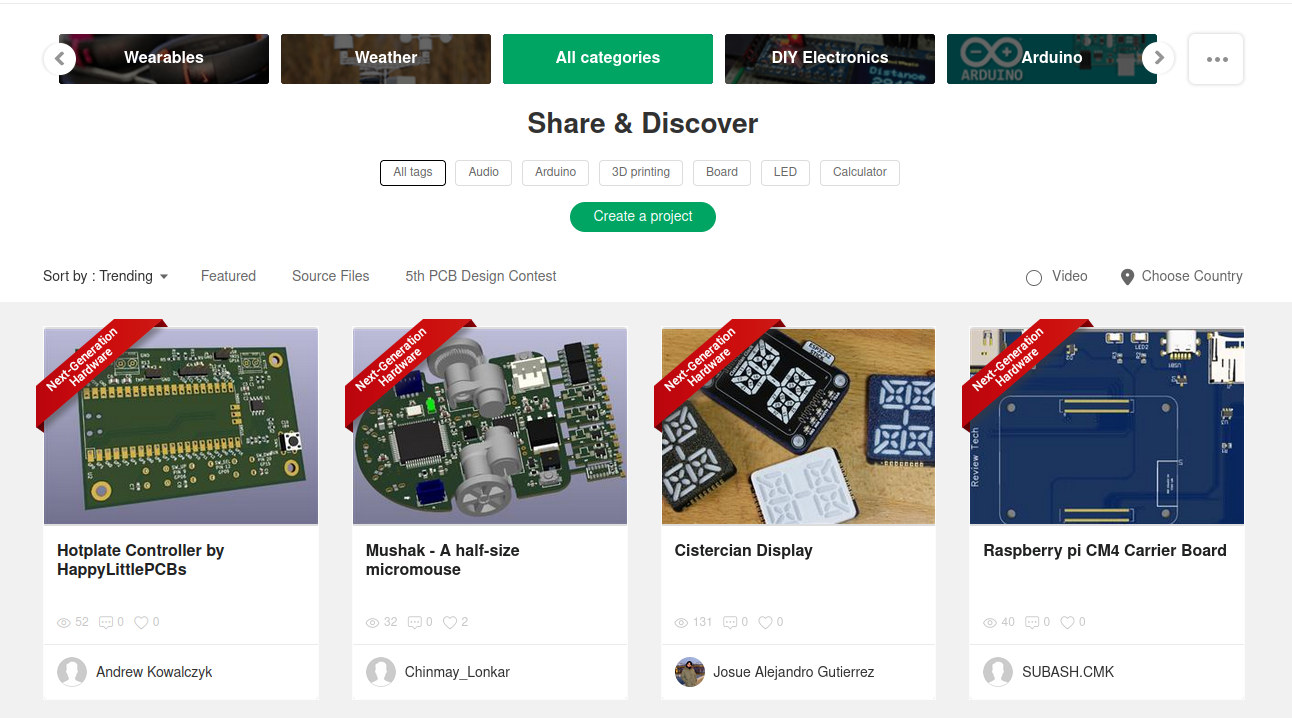Elephant Robotics just launched roboBeats interactive music robot & Bluetooth speaker on Kickstarter. The robot is comprised of a display, two arms, as well as touch sensors, and a speaker for user interaction. The company is known for its robots for education such as the myBuddy 280 or MechArm Pi 270 robotic arms based on Raspberry Pi 4 SBC, and while the roboBeats is more like a toy for children and adults alike, the ESP32 wireless microcontroller powering the desktop robot can also be programmed with the Arduino IDE. roboBeats key features and specifications: Wireless MCU – Dual Xtensa 32-bit microcontroller (ESP32) with WiFi and Bluetooth Display – 320×240 display Audio – Full frequency speaker Two arms Touch interfaces on the front body (chest) and top (head) Motors – Brushless (BLDC) motors with near-silent operation USB – 1x USB Type-C port located under the robot for power and programming Misc […]
Arduino-shaped development board ships with a Nordic Semi nRF9160 module
Actinius Icarus SoM DK development board follows the Arduino Uno form factor and is equipped with the company’s Icacus SoM based on Nordic Semi nRF9160 system-in-package with LTE Cat-M, NB-IoT, and GPS connectivity. The development kit provides an eSIM on the module and an additional Nano SIM socket on the mainboard, Arduino headers for a wide range of I/Os and compatibility with Arduino Shields, a set of user LEDs, reset and user buttons, and a battery charging port. Icarus SoM DK specifications: Icarus SoM SiP – Nordic Semi nRF9160-SICA system-in-package with Arm Cortex-M33 MCU, 1024 KB flash, 256 KB SRAM, and LTE Cat-M1 (eMTC), Cat-NB1 (NB-IoT), and GPS connectivity Storage – 64Mbit SPI flash On-board eSIM Antennas – 2x u.FL connectors for LTE and GPS Sensor – Low power 3-axis accelerometer I/Os – 2x 20 castellated holes with GPIOS, I2C, SWD, Reset, SIM card signals, and power pins Supply Voltage […]
Maker Pi Pico Mini adds battery, buzzer, GPIO LEDs to Raspberry Pi Pico (W)
Cytron’s Maker Pi Pico Mini is an add-on board for the Raspberry Pi Pico and the latest Raspberry Pi Pico W with a battery port, GPIO status LEDs, a WS2812B Neopixel RGB LED, passive piezo buzzer, user and reset button, as well as “Maker” ports for expansion. It comes with most of the features found in the company’s Maker Pi Pico board, but in a much more compact form factor, since the add-on board is only slightly larger than the Raspberry Pi Pico to allow for soldering using the castellated holes. Maker Pi Pico Mini specifications: Fitted with Raspberry Pi Pico / Pico W LEDs – 6x Status indicator LEDs for GPIOs, 1x RGB LED (WS2812B Neopixel) Audio – 1x Passive piezo buzzer (to play musical tones or melody) Buttons – Reset and user buttons Expansion 3x Maker ports compatible with Qwiic and STEMMA QT, as well as Grove modules […]
LILYGO T-RGB round color touch display is powered by ESP32-S3R8 wireless microcontroller
LILYGO T-RGB is a wireless 2.1-inch round color touchscreen display based on ESP32-S3R8 dual-core microcontroller with WiFi 4 and Bluetooth 5.0 connectivity, 8MB PSRAM, and 16MB flash storage. The device also includes a microSD card socket for data storage and a Grove I2C connector for expansion and supports LiPo battery power. The company also says it can be charged through USB, so the board must include a battery charging circuit contrary to some other boards from LILYGO. LILYGO T-RGB specifications: SoC – Espressif ESP32-S3R8 dual-core Tensilica LX7 microcontroller up to 240 MHz with vector instructions for AI acceleration, 8MB PSRAM, WiFi 4 and Bluetooth 5.0 LE + Mesh connectivity Storage – 16MB SPI flash, MicroSD card socket Display – 2.1-inch round 18-bit RGB color IPS TFT display with 480×480 resolution (ST7701S SPI controller), touchscreen panel USB – USB Type-C port for power and programming Expansion – Grove I2C connector Misc […]
Olimex ESP32-C3-DevKit-Lipo is a tiny RISC-V board with WiFi 4, Bluetooth 5.0, and a LiPo battery charger
Olimex has just launched the ESP32-C3-DevKit-Lipo board based on ESP32-C3 RISC-V wireless microcontroller offering WiFI 4 and Bluetooth 5.0 connectivity, some I/Os, as well as USB and JTAG. As its name implies, the board can be powered by a LiPo battery and charged through a USB Type-C port. It offers up to 15 GPIO for expansion and comes with an ICSP connector in case you need to reflash or debug the bootloader through a JTAG interface. ESP32-C3-DevKit-Lipo specifications: Wireless module – Espressif Systems ESP32-C3-MINI-1-N4 module with: ESP32-C3 (ESP32-C3FN4) 32-bit RISC-V single-core processor up to 160 MHz with 4 MB embedded flash, 384 KB ROM, 400 KB SRAM (16 KB for cache), 8 KB SRAM in RTC Connectivity – 2.4 GHz 802.11b/g/n Wi-Fi 4 1T1R up to 150 Mbps & Bluetooth LE 5.0 with PCB antenna USB – 1x USB Type-C port for programming and JTAG debugging Expansion – 2x 9-pin […]
Unexpected Maker TinyS3, FeatherS3 and ProS3 boards feature ESP32-S3 dual-core wireless MCU
Seon Rozenblum, better known as Unexpected Maker, has launched upgrades to its ESP32-S2 boards such as the TinyS2 with ESP32-S3 variants, namely TinyS3, FeatherS3, and ProS3 boards. The new boards share the same form factors as the TinyS2, FeatherS2, and ProS2, but they get a more powerful dual-core microcontroller with AI instructions and 512kB SRAM. The microcontroller also adds Bluetooth 5.0 Low Energy (BLE) connectivity with Bluetooth Mesh support, instead of just WiFi 4 connectivity found in the earlier boards. TinyS3, FeatherS3, and ProS3 boards share the following features: SoC – Espressif Systems’ ESP32-S3 with Dual-core 32bit Xtensa LX7 microcontroller up to 240MHz RISC-V ULP Co-processor 512KB SRAM 2.4GHz Wifi 4 (802.11b/g/n) Bluetooth 5.0 BLE + Mesh Memory – 8MB QSPI PSRAM Flash – 8MB to 16MB depending on the model. USB – 1x USB Type-C connector with reverse back-feed protection for power and programming Antenna – 3D high gain […]
LiLyGo T-SIMCAM ESP32-S3 camera development board supports optional 4G LTE connectivity
ESP32-S3 has been in the news recently and we just wrote about the Bee S3 and BPI-PicoW-S3 boards yesterday, but there’s more, and LilyGo T-SIMCAM ESP32-S3 is another interesting ESP32-S3 board with a 2MP camera as well as support for an optional 4G LTE module. The board can make use of the AI capabilities from the ESP32-S3 microcontroller through the built-in camera and microphone and offers two options for power with 5V through a USB Type-C port, as well as a 2-pin JST connector for connecting a battery. T-SIMCAM ESP32-S3 CAM board specifications: Wireless MCU – ESP32-S3R8 dual-core Xtensa LX7 microcontroller with WiFi 4 and Bluetooth 5.0 LE and Mesh connectivity with 8MB PSRAM Storage – 16MB QSPI flash, MicroSD card socket Camera – 2MP OV2640 camera with 1622×1200 resolution Audio – I2S digital microphone Connectivity – Optional NB-IoT, 2G GSM, or 3G/4G LTE module via mPCIe socket and SIM […]
PCBWay – A community-focused PCB manufacturer (Sponsored)
There are many PCB manufacturers in China, but PCBWay has been around for over a decade providing PCB prototype and manufacturing services, and is one of the companies that care the most about the community with project sharing and various community events organized over the years. If you use PCBWay services, you will join the more than 70,000 customers who already used their services, and the company claims an over 99% on-time delivery rate thanks in part to having factories in Shenzhen that work in three shifts per day. In order to better serve its customer around the world, the PCB manufacturer also has offices in Hong Kong, as well as Paris, for European customers. PCBWay services include PCB prototyping and PCBA assembly services for small volume production, and the company highlights its SMT expertise and capabilities with high-speed Pick-and-Place machines that can place up to 28000 components per hour […]


